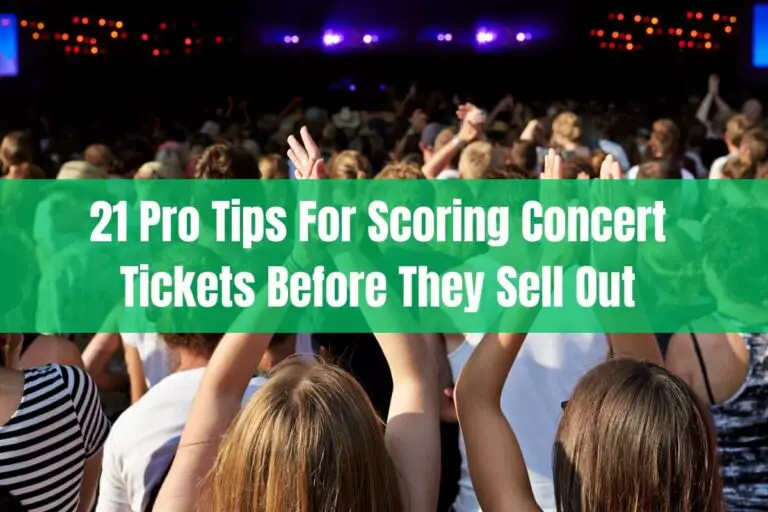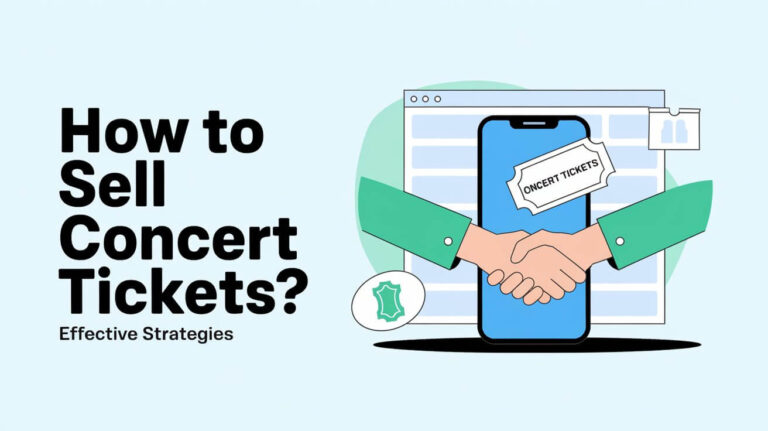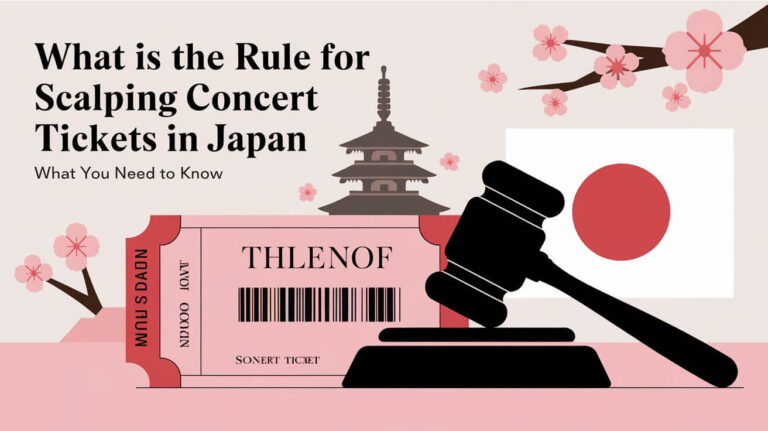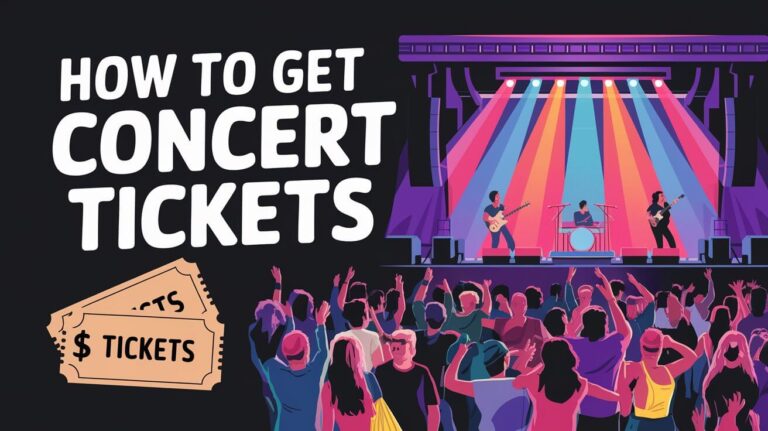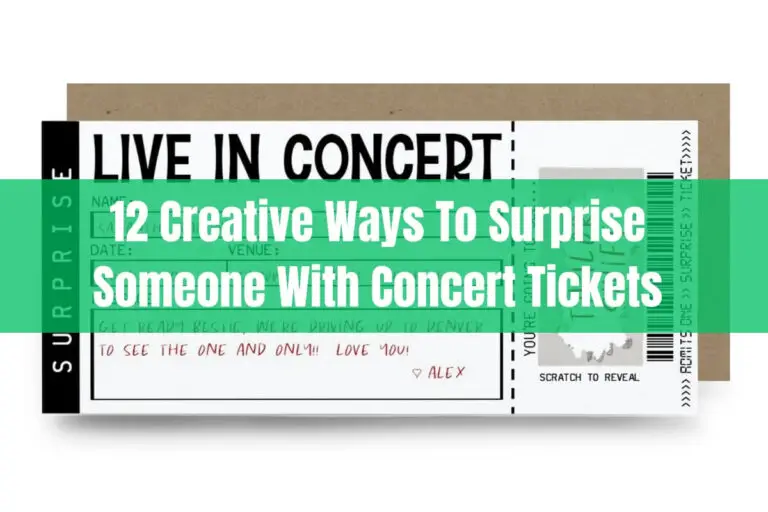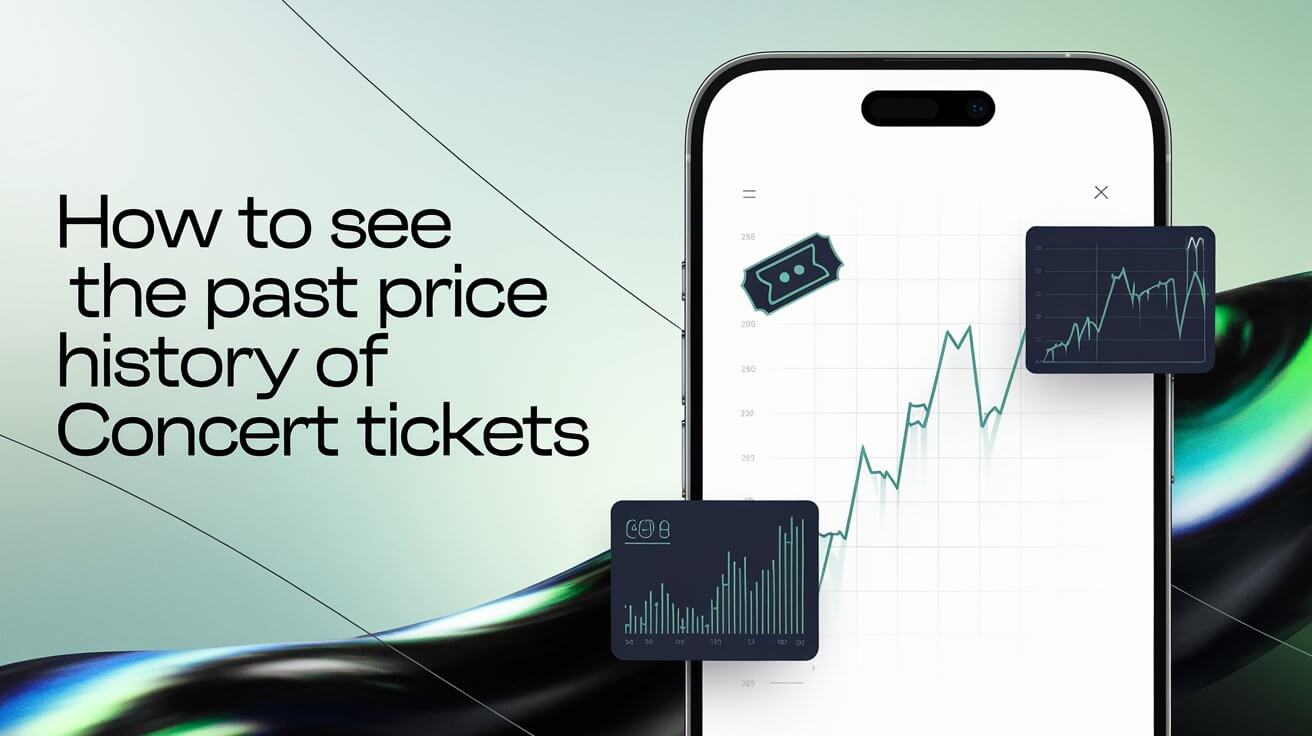
Concert ticket prices have changed a lot over the years. In 1956, Elvis Presley’s tickets were just $1.50, about $17 today. Looking at ticket price history helps fans understand future costs and spot trends.
The Beatles’ 1966 ticket price was $5.50, or about $53 today. By checking past prices, fans can plan better and budget for concerts.
It’s important for concertgoers to see the past ticket prices. This helps them notice when prices go up or down. From 1996 to 2003, concert ticket prices rose by 82%, while the cost of living only went up 17%.
This big jump in ticket prices means fans need to know the history to buy wisely. For example, Taylor Swift’s 2023 tickets cost $253. Knowing this helps fans plan their concert budgets.
Concert Ticket Price Patterns Through Time
Concert ticket prices have changed a lot over time. This change is due to many things like how popular the artist is, the size of the venue, and how much people want to go. Looking at past prices and trends helps fans make smart choices when buying tickets.
Prices have gone up over the years, with some times being more dramatic than others. For example, the 1980s saw a big jump in prices because rock and pop music became more popular. Today, prices keep going up, thanks to online ticketing and the secondary market.
Historical Trends
Looking back, ticket prices for famous artists have really gone up. On average, concert ticket prices have tripled from the mid-90s. This rise is because of more demand, bigger venues, and the growth of secondary ticketing.
Current Trends
Nowadays, ticket prices are going up even more, with some tickets costing thousands. The secondary market is a big factor in setting these prices, making them higher when demand is high. But, fans can find good deals by watching price changes and booking at the right time.
| Artist | Average Ticket Price |
|---|---|
| Harry Styles | $600 |
| Taylor Swift | $500 |
| Lady Gaga | $400 |
Knowing past ticket prices and trends, fans can make better choices when buying tickets. Whether you love rock, pop, or hip-hop, staying updated on prices and trends is key to getting a good deal.
Tools That Track Concert Ticket Prices
Concert ticket prices can change a lot. It’s key to track them to find the best deals. Luckily, many tools help with this. They give insights into past price trends, helping fans make smart choices when buying tickets.
Popular sites like StubHub and SeatGeek have lots of historical price data. They let users compare prices from different sellers. This way, fans can find the best deals. Mobile apps like TicketIQ and Rukkus also offer real-time updates and alerts. They help fans catch the best deals quickly.
Price Tracking Websites
- StubHub: Offers historical data on ticket prices and allows users to compare prices across different sellers.
- SeatGeek: Provides detailed price tracking and alerts for upcoming events.
- Tickets.com: Lets users track ticket prices and get notified when prices go down.
Mobile Applications
Mobile apps like TicketIQ and Rukkus give real-time updates and alerts. They make it simple for fans to keep up with ticket prices anywhere, anytime.
| Application | Features |
|---|---|
| TicketIQ | Real-time price updates, alerts, and price tracking |
| Rukkus | Personalized event suggestions, real-time price updates, and alerts |
Using these tools, fans can stay updated on price trends. This way, they can enjoy their concert experience even more.
Primary Ticket Seller Historical Data
Looking at historical data from primary ticket sellers is key to understanding ticket prices. Sellers like Ticketmaster and AXS offer insights into past ticket sales. You can find this data on their websites or mobile apps.
Studying past ticket sales, fans can spot trends. This helps them plan their ticket buys better. For example, tickets bought on the day of the concert were 33% cheaper than usual. Those bought the day before were 27% cheaper.
Here are some important facts about concert ticket prices:
- Tickets bought three months before a concert were 14% more expensive than the average on the secondary market.
- 24% of concert tickets sold on the secondary market happened in the week before the concert.
- Passes bought 13 days before a festival were 30% cheaper than average. Those bought 12 days before were 24% cheaper.
| Days Before Event | Average Price Savings |
|---|---|
| 13 days | 30% less than average |
| 12 days | 24% less than average |
| Day of the concert | 33% less than average |
Using historical ticket data from primary sellers, fans can make smarter choices. This can help them save money on concert tickets.
Secondary Market Price Archives
The secondary market is key in the ticketing world. It has many platforms with historical price data. Access to ticket price archives is vital for smart buying or selling decisions.
Platforms like StubHub and SeatGeek give detailed price overviews, including historical data. This helps fans track price changes and spot trends. It lets them plan and budget for future events. For example, knowing past prices can help fans buy tickets at the best time for their favorite artists.
Popular Secondary Market Platforms
- StubHub: offers detailed price records and historical data
- SeatGeek: provides historical analytics and pricing trend insights
- Vivid Seats: lets fans track price changes and get alerts when prices fall
Using these secondary market platforms and their archives, fans can make smart choices. They can also stay current with concert industry pricing trends.
Price Comparison Platforms for Concert Tickets
When buying concert tickets, it’s key to compare prices. Price comparison platforms gather listings from many sellers. This lets fans see prices and pick the best deal. Using these tools can help fans save money and avoid paying too much.
Platforms like TicketJam and TickPick are popular for this. They offer features like price alerts and ticket history. For example, TicketJam lets you track price drops and set alerts. TickPick gives detailed info on tickets, including seat views and prices.
Using these platforms can save a lot on concert tickets. TicketJam can save up to 50% by comparing prices. TickPick is also 10% cheaper than its biggest rival, thanks to no service fees.
| Platform | Features | Savings |
|---|---|---|
| TicketJam | Unlimited price alerts, ticket price history | Up to 50% savings |
| TickPick | Detailed ticket information, pricing transparency | 10% cheaper than largest competitor |
Price comparison platforms help fans enjoy concerts without spending too much. They are key for finding great deals on concert tickets. Their features and benefits make them a must-have for anyone going to a live event.
Seasonal Price Fluctuations for Concert Tickets
Concert ticket prices change a lot because of the season. Knowing when prices go up and down helps fans save money. In summer and holidays, more people want to go, so tickets cost more.
But, in the quiet times, tickets are cheaper. Buying them just before the concert can save you 20.77 percent. And, if you buy on the day, you spend 33 percent less than usual.
Peak Season Pricing Trends
Prices are highest when tickets first go on sale, about three months before. Big festivals like Coachella and Lollapalooza Chicago see their prices go up early too.
Off-Peak Ticket Costs
When it’s not busy, tickets are cheaper. Music festival tickets drop by 16.96 percent on the day of the event. But, tickets sell out fast, depending on the venue size.
| Event Type | Average Price Decrease | Ticket Availability |
|---|---|---|
| Concerts | 20.77% | Varies by venue size |
| Music Festivals | 16.96% | Limited availability on the day of the festival |
By knowing when prices change, fans can buy tickets smarter. This way, they might save money and get the best seats.
Data Analysis Methods for Ticket Price History
To understand ticket pricing trends, we need to analyze historical data. We look at event, time, and location to see how prices change. Advanced software helps find the best prices based on the market.
When analyzing ticket price history, we consider a few things:
- Demand for concert tickets changes with event popularity, season, and fan base
- Seating locations, like how close to the stage, affect ticket prices
- Weather conditions can also impact ticket pricing
- Unique fee structures for selling concert tickets on different marketplaces
By using data analysis, fans can make better choices. For instance, looking at ticket price history can show how prices relate to artist popularity or venue size.
| Factor | Impact on Ticket Pricing |
|---|---|
| Demand | High demand can drive up ticket prices |
| Seating Location | Proximity to the stage can increase ticket prices |
| External Factors | Weather conditions, artist popularity, and venue size can influence ticket pricing |
Using data analysis, like Lysted does, helps fans understand concert ticket prices better. By looking at ticket price history and using data analysis, fans can find the best deals.
Venue-Specific Price Tracking Systems
Understanding ticket prices for different venues is key. Fans can predict price changes by looking at data from specific places. For example, tickets for big concerts in major cities usually cost more.
Price tracking systems help fans stay on top of ticket prices. They offer insights into pricing trends for certain venues. Some tools even send alerts when tickets go on sale, so you can buy them fast.
Arena Price Databases
Arena price databases are important for tracking ticket prices. They hold data on past prices for events at specific arenas. This lets fans see how prices have changed over time.
Stadium Historical Records
Stadium historical records work the same way for outdoor venues. By looking at these records, fans can spot trends in ticket prices for various events and venues.
| Venue Type | Average Ticket Price | Price Tracking Tool |
|---|---|---|
| Arena | $100 | Distill |
| Stadium | $150 | TickPick |
Fans can make more informed decisions when purchasing tickets by utilizing venue-specific price tracking systems. Whether it’s an arena or stadium, having access to past prices and alerts can help you get the best deals for your favorite events.
Price History Charts and Graphs
Looking at historical data helps us see trends and patterns in concert ticket prices. Price history charts and graphs make it easy to understand this data. They help fans make smart choices when buying tickets.
For instance, a line graph can show ticket price changes over time. A bar chart can compare prices at different venues. This info is key for planning concerts and setting a budget. For example, Olivia Rodrigo’s GUTS world tour tickets cost $200.00 before taxes and fees. Taylor Swift’s Eras Tour tickets average $1,088.56.
| Concert Tour | Average Ticket Price |
|---|---|
| Olivia Rodrigo’s GUTS world tour | $200.00 |
| Taylor Swift’s Eras Tour | $1,088.56 |
Studying price history charts and graphs, fans can better understand the concert ticket market. This knowledge helps them make better choices when buying tickets.
Archive Access Through Fan Communities
Fan communities are key in sharing ticket price info and accessing historical data. They are vital for fans wanting to buy or sell tickets. These groups offer insights into pricing trends and patterns.
Online forums and social media groups help fans discuss and share ticket price info. This helps others make smart buying choices. For example, fans can join Facebook groups or Reddit forums to connect and share.
Forum Price Discussions
Some popular online forums and social media groups include:
- Facebook groups dedicated to concert ticket prices
- Reddit forums for discussing ticket prices and sharing information
- Specialized online communities for fans of specific artists or genres
Social Media Price Tracking Groups
These online communities offer a space for fans to share and discuss ticket prices. They foster a sense of community and cooperation. By joining these forums and groups, fans can access valuable info and insights. This makes it easier to understand concert ticket prices and access archives.
Market Factors Affecting Historical Ticket Prices
Looking at historical ticket prices, we see many market factors at play. These include artist popularity, venue size, and demand. These elements greatly affect ticket prices. Fans can use this knowledge to predict price changes and make smart choices when buying tickets.
Service charges often make up a big part of ticket costs, adding about 30% to the face value. Concert promoters like Live Nation don’t set ticket prices. Instead, artists and their teams decide on prices. This shows how complex the concert industry is, with many players involved in setting ticket prices.
Some important stats show how market factors impact ticket prices:
- Average ticket price for the top 100 tours globally was £101 in the past year, up from £82 in the previous year.
- Concert ticket prices saw a notable increase, with prices rising by 23% in a year and 19% post-pandemic.
- Standing ticket prices for concerts can experience significant inflation over the years, with an Oasis standing ticket at Wembley Stadium costing £44.04 in 2009 and rising to £150 for a similar ticket in the following years.
Studying these market factors and historical ticket prices, fans can find deals and avoid overpaying. As the concert industry grows, knowing these factors will help fans make better choices when buying tickets.
| Year | Average Ticket Price | Price Increase |
|---|---|---|
| 2019 | £82 | – |
| 2020 | £101 | 23% |
| 2021 | £120 | 19% |
Last Summary
Understanding concert ticket price history is key for music fans. It helps them navigate the changing ticket prices. This knowledge lets fans get the best deals and enjoy their concerts more.
The concert industry keeps changing, with new pricing strategies and secondary markets. Keeping up with price trends is now more important than ever. Fans can plan their budgets and find great deals by knowing past prices.
Whether you’re a regular concertgoer or new to the scene, looking at ticket price history is worth it. It helps fans make better choices and enjoy their concerts even more. This way, fans can connect deeper with the music they love.

